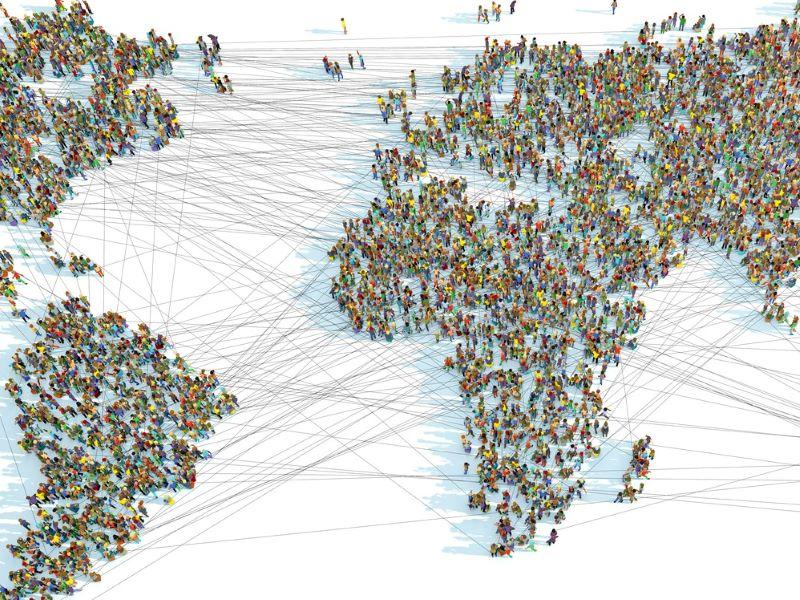
The dos and don’ts of successfully developing an international network in higher education

You may also like
As the founder of the UK’s first empathy centre, focused on improving healthcare outcomes through greater understanding of patient perspectives, I am keen to seek out international best practice in this area.
What started as a conversation with a colleague about working with the other empathy specialists around the world has transformed, two years later, into a global network of 13 centres across five continents.
The Global Empathy in Healthcare network has established a model for implementing empathy into healthcare worldwide – and from 2027 will be implementing a “World Empathy in Healthcare Day”. This enables our team at the Stoneygate Centre for Empathic Healthcare and our partners around the world to develop teaching and training in line with the latest global insights.
We have built this network with no initial funding at all and – while it is still in its infancy – we have already learnt many valuable lessons about what is needed for an international network to move from idea to reality.
Tips for success when building a global academic network
1. Just do it: We had no dedicated funding for the network, so made a basic website on Wix. We then contacted all the empathy centres we knew to ask whether they would join. They all said “yes”. The network has since had published outputs, hosted a global symposium, worked on joint funding applications, and started planning a “World Empathy in Healthcare Day”. Often you need to get started to create opportunities, rather than the other way round.
2. Use inclusion to navigate institutional waters: Many institutions can get touchy about setting up new things without going through endless procedures, protocols, meetings and approvals. The University of Leicester was incredibly supportive, so we were lucky in this regard. However, my previous experience at other institutions suggests that one must “just do it” while navigating institutional procedures successfully. While some institutional rules have no flexibility – we must all do the cybersecurity training or we won’t get NIHR funding – setting up collaborations often leads into grey areas. The best way to get your institution on board is to secure buy-in from the person highest up. We’re very lucky to have support from the head of the medical school and the head of college. However, we did not take this support for granted and were sure to involve them in our events and give them opportunities to provide feedback.
- Spotlight guide: Teaching and researching across international borders
- Yes, empathy can be taught – here’s how
- Equitable international research collaboration is possible – find out how
3. Get physical: An in-person meeting is essential for at least two reasons. First, relationships are built; second, by travelling, members get “skin in the game” or, put simply, a personal stake. We held the inaugural meeting of the Global Network in April 2023, in Leicester. All eight people we invited attended and new professional partnerships formed.
4. Get an early output: At the inaugural meeting, a member suggested that we co-author a declaration, to set a global agenda for empathy in healthcare. We did this, and it was published in the journal Patient Education and Counselling in December 2024. With a group of international experts in the same room, it should not be difficult to get a meaningful editorial or similar that will be of interest to a journal. The written output then becomes something to rally around.
5. Give an award: At the inaugural meeting, and the symposium, we awarded “Lifetime Achievement Awards” to individuals who had dedicated their careers to promoting empathy in healthcare. It’s great to give back to people on whose shoulders we stand, and it helps ensure that the global rock stars support the network.
6. Keep the momentum going: In the declaration, we stated that we would do a number of things, including host a global symposium and make the network more global – at the time it was very international, but not global as there were no centres from low- or middle-income countries. To address this, we collaborated with international colleagues to help them set up their own centres. We followed all the tips shared here to achieve this, and we’ve been successful, with new centres being established in Brazil, India, Nigeria, Japan and Mexico. We have also been joined by other existing empathy centres such as San Diego State University Healthcare EmpathyRx Lab and the Emp@thies Centre in France. We hosted our first global symposium on 15-16 September 2025, attended by 125 specialist participants from 18 countries. News of the symposium was shared on CBS News in the US that same month.
7. Be flexible: Getting new empathy centres on board, with the goal of being global, requires flexibility. Other than a commitment to advancing empathy in healthcare education and practice, the network has no agenda. This is a good thing because it increases the diversity and robustness of the network. For example, the centre in Japan is focused on measuring empathy; the centre in Brazil is focused on empathy and the law; the centre in India is focused on empathy for people with non-communicable diseases. Working across different cultures also requires adaptability.
8. Travel light: International networks are often not lucrative – especially in their early days. It is therefore essential to keep it light. We did this through a simple self-created website and avoiding unnecessary meetings.
9. Have an amazing administrator: We are lucky that our administrator Catherine, who is the manager of the Stoneygate Centre, is incredible and ensures that operationally, the network runs smoothly.
10. Money: It is possible to start a network with no funding – I founded the Oxford Empathy Programme with no initial funding. All you need is a simple free website and some people. However, arranging the first physical meeting and the symposium requires funding. As a minimum, we insisted that members of the network from low- and middle-income countries have their travel and accommodation to the meeting and symposium funded. We were able to use funding from the Stoneygate Centre for Empathic Healthcare to achieve this.
Key challenges to be aware of:
1. The dominance effect: Some of our members did not speak English and we celebrated this; others had dominant voices, often accompanied by large resources. We have been able to avoid dominance of the louder voices by establishing a clear agenda in advance, setting a precedent during meetings to ask all members for feedback, and having an experienced chair.
2. Establishing boundaries: This challenge may be specific to us. Empathy is closely related to other concepts including “person-centred care”. Because of our budgetary constraints, we initially decided to only include centres that explicitly focus on empathy. We have subsequently decided to open up the network to individuals, and centres that focus on related things like compassion and person-centred care: watch this space.
Jeremy Howick is director of the Stoneygate Centre for Empathic Healthcare at the University of Leicester.
The University of Leicester is shortlisted for International Collaboration of the Year in the 2025 Times Higher Education Awards. A full list of shortlisted candidates can be found here.
If you would like advice and insight from academics and university staff delivered direct to your inbox each week, sign up for the Campus newsletter.


